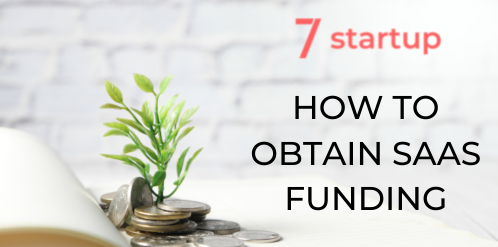Introduction to Saas Funding
Saas (Software as a Servive) has been predicted to rapidly grow in the next coming years. It is estimated that SaaS sector will even double over the next year. SaaS funding will only look to expand this sector.
Private equities and venture capitals have become very eager in such a model, due to its explosive growth. Motivated by the enormous potential for recurring income and adaptable development models. It has the capacity to increase market share without subjecting customers to significant up-front expenses. With all that in consideration, SaaS funding is the present and future for many Private equities and venture capitals.
Starting Point for SaaS Growth
Equity ’s logical in the early stages, when revenues are minimal and insufficient to service a loan. The most popular choice for a fresh start-up is exchanging shares in your SaaS company for cash.
Alternately, some people could attempt to hop on the bank, and undergo an endless round of meaningless meetings that lead to covenant-heavy and constrictive term sheets.
The Challenge of Growing a SaaS
high expansion SaaS companies must meet their goals for client acquisition, keep those customers, and react rapidly to user requests. Marketing teams, managers overseeing customer satisfaction, and highly specialised departments in technology, are all considerable expenditures, needed for this. Scaling a SaaS firm is expensive, to put it bluntly.
Many people entering the startup world, understand that the SaaS sector is booming. The influx of investments towards these ventures is an obvious sign of the times. Thus, making the industry highly competitive. Having an advantage in marketing and sales is one such way of having a competitive edge. Because it can be challenging to identify targeted consumers and determine the best way to engage them, SaaS firms frequently suffer from marketing and sales. Furthermore, differentiating your service in a saturated market might be difficult, due to the vast number of options clients have access to. However, outsourcing the company’s marketing to an agency that specialises in digital marketing and can assist you in developing a strategy.
The number of competitors as well as the SaaS funding can be a difficult burden to handle. Overall, SaaS businesses in general can be high maintenance.
Raising Funds
Raising money entails giving up your freedom and responding to others. At the absolute least, it involves embarking on a journey that is different from what you had anticipated in terms of your objectives, development and returns. However, knowledgeable investors will lead you and save you from committing errors.
There is no clear-cut “yes” or “no” response to the issue, but a typical place to start is by assessing what you already have.

SaaS Funding: Scenario
Let us establish three scenarios you might currently be:
Scenario A
“You have a general idea for a Minimum Viable Product (MVP), but you do not have the funding necessary to develop it.”
This is a very obvious situation is when financing is needed to realise your vision, but you’ve probably already moved past it. There are many things you can do to get ready with bootstrapping, including creating wireframes and copy to make your idea more concrete, conducting preliminary market research, and creating a proper plan that outlines what you can and cannot do as well as how much market share you could gain with funding.
You must be ready to explain in detail how you will be distributing finances since, as you know, money carries with it the implication that you should be spending it.
Scenario B
“You have a strategy for expanding your MVP.”
Try to expand the company as far as you can on your own. You can bootstrap with your own money or utilise some form of client finance (for instance, product pre-payments, monetizing the initial service or product, or having a single important customer pay for particular feature development).
Your staff size, the cost of maintaining your website or service, as well as your revenue strategy will all affect how much money you need: Determine your runway (cash on hand minus cash outgoing) to determine how long you can function without needing further funding.
Carefully consider evaluating the problem if you are at the point where you can no longer expand on your own. Would you need to improve your team’s operational procedures? Is retaining customers difficult? These types of developing problems cannot be resolved by funding; they must be identified and addressed.
Scenario C
“You can’t continue on further expanding on your own.”
You likely need cash at this point to help your product spread further. This puts you in a situation similar to Scenario A: begin creating a funding plan, determine how much cash you require to accomplish the following milestone or aim, and determine however much equity you would be ready to give up as you move through the procedure (potentially 10% to 20% per round).

Venture Capital (VC) for SaaS Funding
A lot of work goes into VC investment for SaaS funding. Finding an investor, you connect with and who is enthusiastic enough with your SaaS to contemplate getting involved may take more than 30 meetings. In these early phases, you’ll need to provide the following information in order to:
- What makes you worth the time and investment into your product or service?
- Who is your competition?
- Why those particular investors?
- What is your specific growth strategy, and how do you planning to putting it into practice?
- How much money is required to actualise your plan?
Conclusion
Keep in mind that SaaS funding from VC’s comes with the requirement that you considerably expand your staff and business. As such, the value of their interest will climb tenfold. Investors will examine particular objectives and criteria to determine whether you were successful in raising the value of your business and enabling investors to make sizeable gains.
No matter the direction you take, don’t overlook the amount of effort it will take to generate money. It will take a lot of time and probably put you under a lot of stress, especially because you’ll inevitably get rejected and potentially have to redo everything. To learn about the differences and similarities between SaaS and PaaS funding, read our related blog post here.

Amit Khanna, 7startup Founder
Amit has 18 years of experience in the industry and an MBA. He supports entrepreneurs with every aspect of their business including concept and product development, investor presentations, and fundraising. Amit & 7startup assist startups in the pre due-diligence process and help connect them to our vast network of investors. Reach out to us today and see if we’re a fit!




